If you’ve been following this blog, you know that we usually zero in on the world of digital music production only… but today, we’re flipping the script a bit.
We’re diving into a topic that spans the line between digital music production and the world of singers & songwriters: What Is Vibrato?
This post is dedicated to breaking down the mystery, the allure, and the art of vibrato.
Whether you’re a singer trying to master vibrato, a songwriter striving to create engaging melodies, or a music producer looking to add depth to your tracks, this guide is for you.
- In the first half 一 we’ll explore the nature of vibrato in the digital realm, offering tips, trick, and expert techniques.
- In the second half 一 we’ll focus on vocal exercises for vibrato, the role of vibrato in different genres, and ways to use vibrato to make a singer sound world class.
You can benefit from both halves regardless of your role in music, so let’s dive in…
Table of Contents
What Is Vibrato?
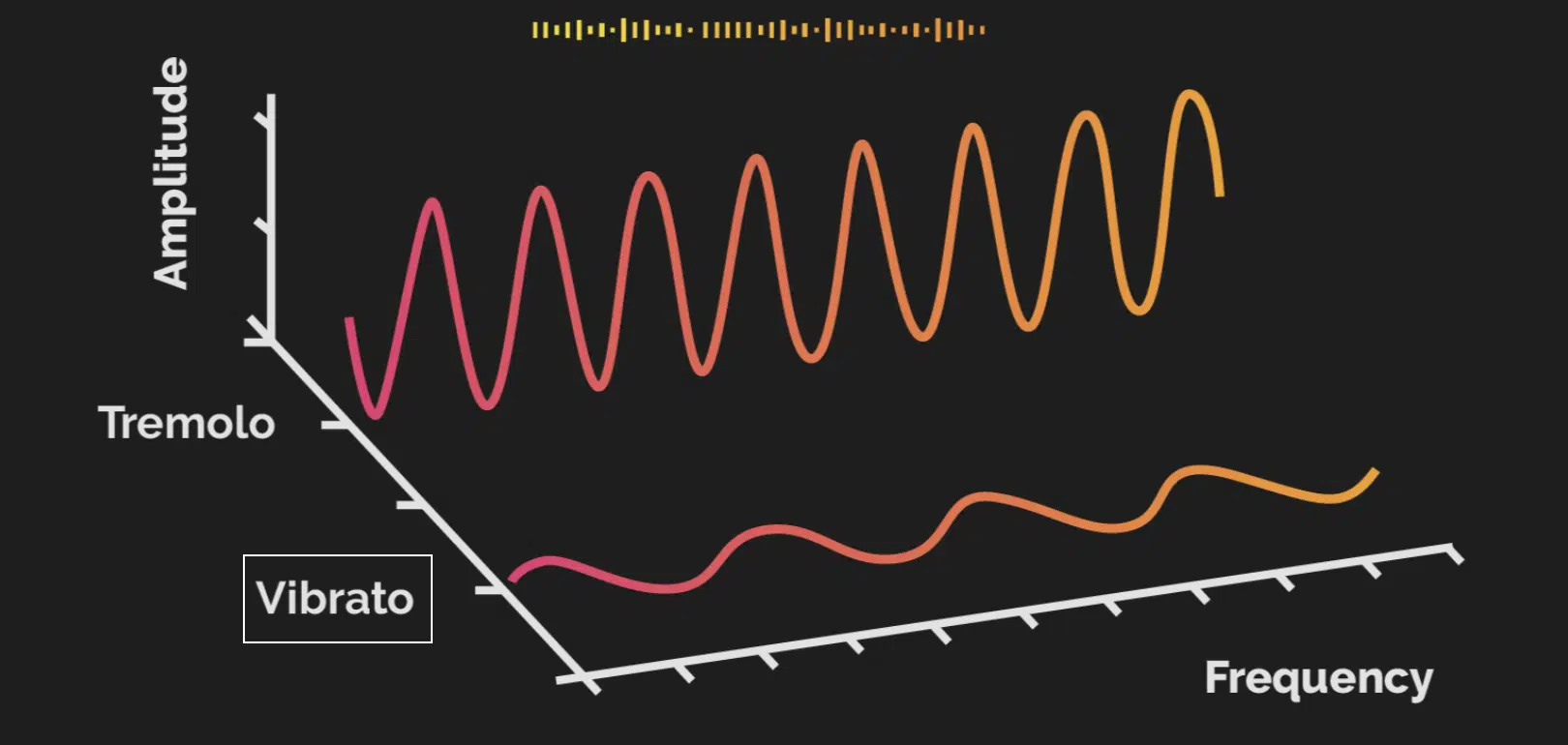
Vibrato in music is like the salt & pepper of the music world: a flavor enhancer that can transform a plain note into something extraordinary.
But what is vibrato, exactly?
Well, at its core, vibrato is a musical effect consisting of a regular, pulsating change in pitch.
It’s used to add expression and depth to vocal or instrumental music.
The presence of vibrato can make a piece of music sound more emotional, richer, and fuller.
Understanding vibrato is crucial for any music producer, as it can dramatically impact the feel and ambiance of a track.
It can help you bring out the best in your tracks and and sound design endeavors.
But vibrato is more than just a technical tool, it’s a potent emotive instrument.
Meaning, It can provide a performance with a sense of tension, anticipation, or release.
A well-executed vibrato can trigger a visceral response, causing the audience to feel a certain way (nostalgic, joyful, melancholic, etc.).
Digital Tools for Vibrato Production
The digital age of music has revolutionized the way we think about vibrato, so let’s break it down.
-
DAW Features
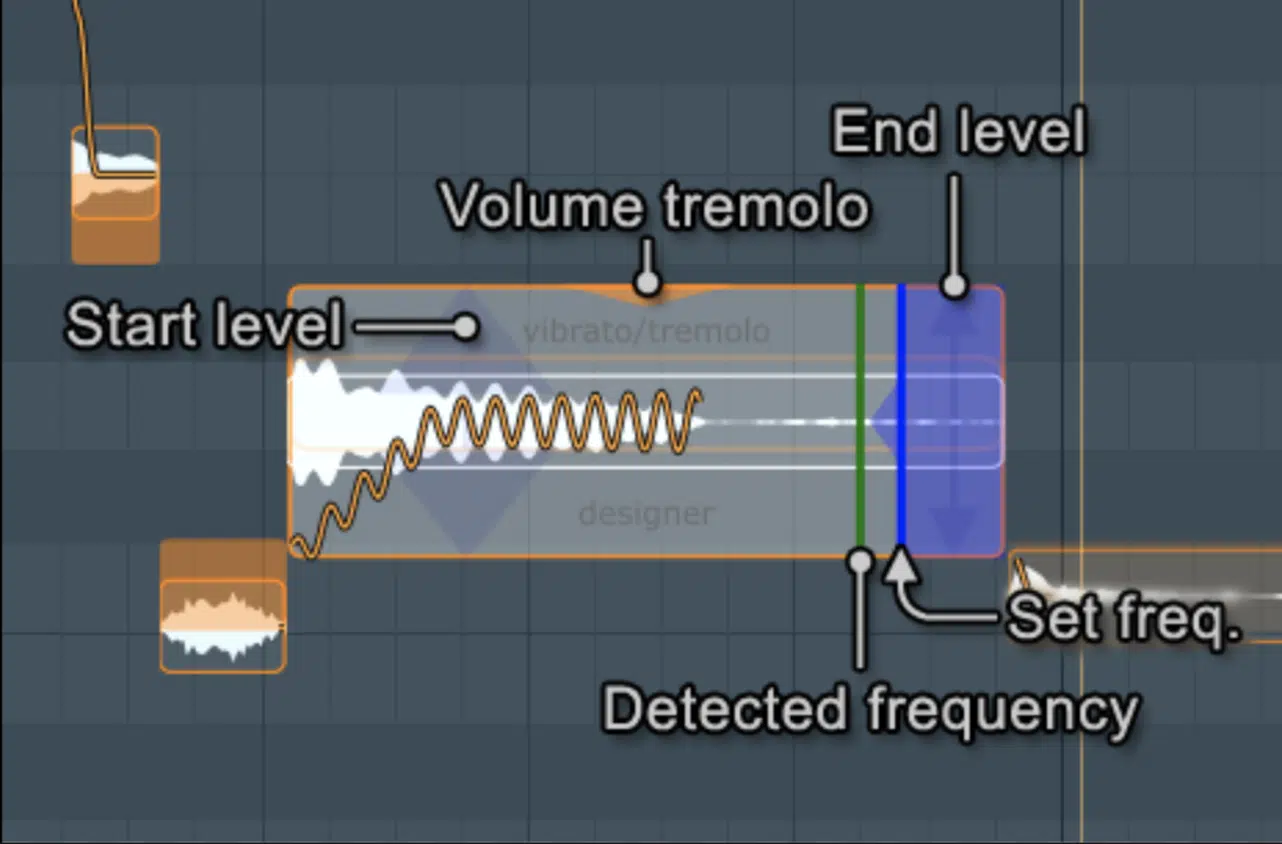
In the realm of digital audio workstations, or DAWs, you have a plethora of tools at your disposal to craft and shape vibrato.
One of the primary tools in your vibrato toolkit is the LFO, or low-frequency oscillator.
By mapping an LFO to the pitch of a sound, you can create a vibrato effect.
The rate and depth of the LFO determine the speed and intensity of the vibrato.
This gives you complete control over the characteristics of the vibrato, allowing you to tailor it to the specific needs of your track.
But the power of DAWs doesn’t stop there!
Automation lanes in your DAW give you the ability to change parameters in real-time.
This means that you can create dynamic vibrato effects that evolve over the course of your unique beats.
You could start with a slow, shallow vibrato during the verse and gradually increase the rate and depth as you approach the chorus, creating a sense of tension and release.
Another incredibly useful feature of DAWs when it comes to vibrato is the ability to copy and paste automation data.
For example, you can copy the automation data from your lead synth and paste it onto your bassline, ensuring consistent vibrato across your instruments.
NOTE: Don’t forget about the power of DAWs to manipulate vibrato in post-production.
If you’ve recorded a vocal or instrumental performance with natural vibrato, you can use your DAW’s editing tools to enhance or modify the vibrato.
For instance, you can use time-stretching tools to alter the rate of vibrato, or pitch-shifting tools to change the depth.
-
Pitch Correction Software
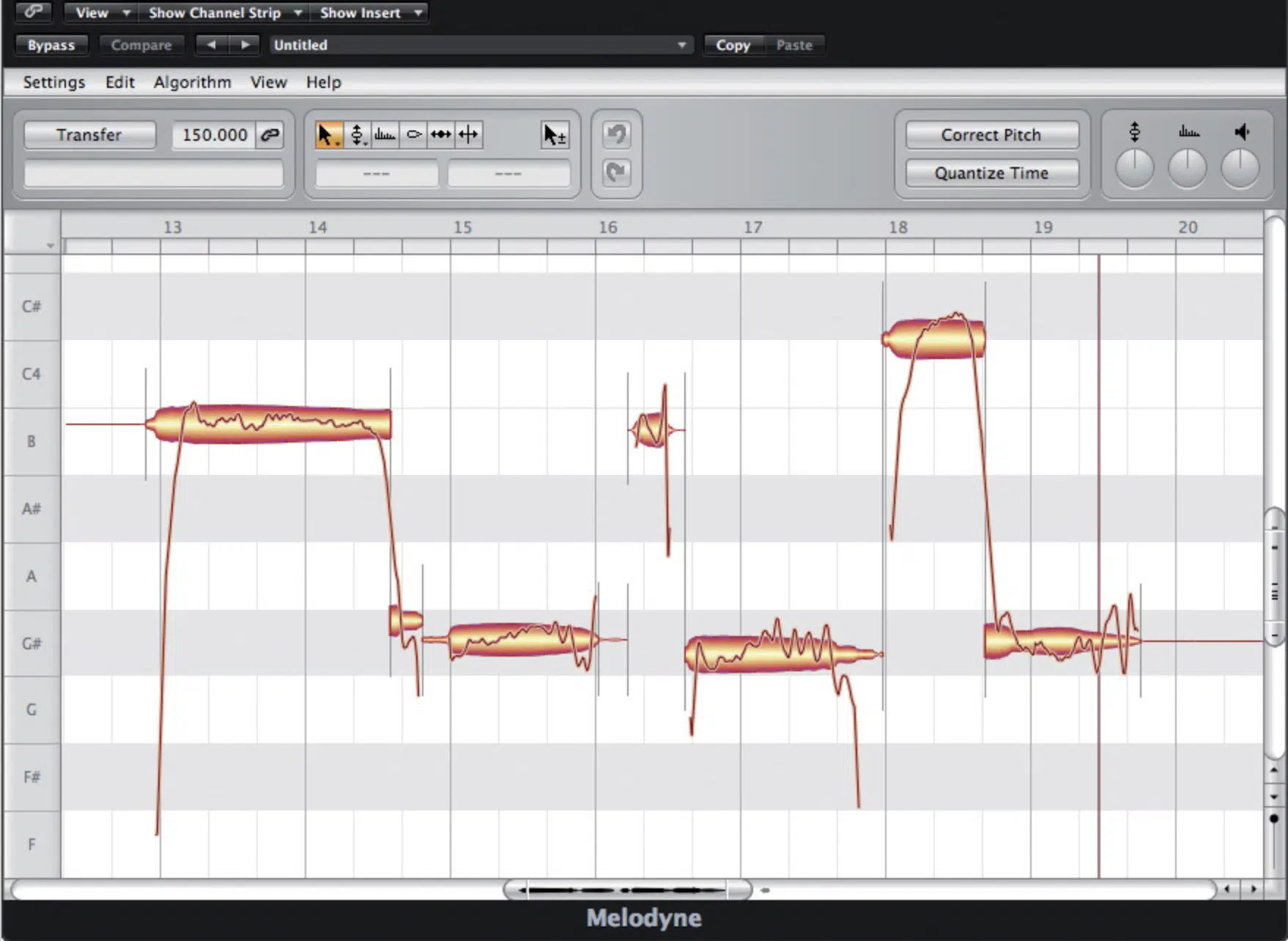
Pitch correction software has become a staple in the digital music production world, and it’s a powerful tool for vibrato manipulation.
Whether you’re working with vocals or instruments, pitch correction software allows you to alter the pitch of a sound with precision.
This is why it’s an ideal tool for creating and shaping vibrato.
Pitch correction software, often used to achieve the popular ‘auto-tune’ effect, can also be an essential tool for producing vibrato.
With it, you can add vibrato to a flat, monotonous vocal or even an instrument that doesn’t naturally produce vibrato, like a synthesizer.
Pitch correction software often includes parameters specifically designed to control vibrato.
These usually include:
- Speed
- Depth
- Onset delay
- Shape
These parameters give you fine-tuned control over the vibrato effect.
For example, if you have a vocal performance that lacks vibrato, you can use pitch correction software to add it in post-production.
Similarly, if you have a performance with too much vibrato, you can use the software to dial it back.
This type of software can be particularly useful when working with sampled or synthesized vocals.
These types of vocals often lack the natural vibrato of a live performance, making them sound artificial and robotic.
By adding a touch of vibrato with pitch correction software, you can bring these vocals to life, giving them a more human and emotional quality.
-
VST Plugins & Effects

VST plugins & effects offer a level of control and precision that would be impossible to achieve with natural vibrato 一 opening up a world of creative possibilities.
One category of these plugins is modulation effects, which include:
- Choruses
- Flangers
- Phasers
These effects work by duplicating the input signal and modulating its pitch or time, creating a vibrato-like effect.
By adjusting the rate and depth of the modulation, you can control the speed and intensity of the vibrato.
For even more control, you might turn to dedicated vibrato plugins.
These plugins usually offer a range of vibrato styles, from subtle and natural-sounding to extreme and experimental.
You can often adjust parameters like rate, depth, and waveform shape, allowing you to dial in the perfect vibrato for your track.
Many of these plugins include advanced features like tempo-syncing and envelope following.
Tempo-syncing allows the rate of the vibrato to be synchronized with the tempo of your track, ensuring a cohesive and rhythmic movement effect.
Envelope following, on the other hand, lets the vibrato respond dynamically to the input signal, which creates a more interactive and expressive effect.
-
Automation Tools
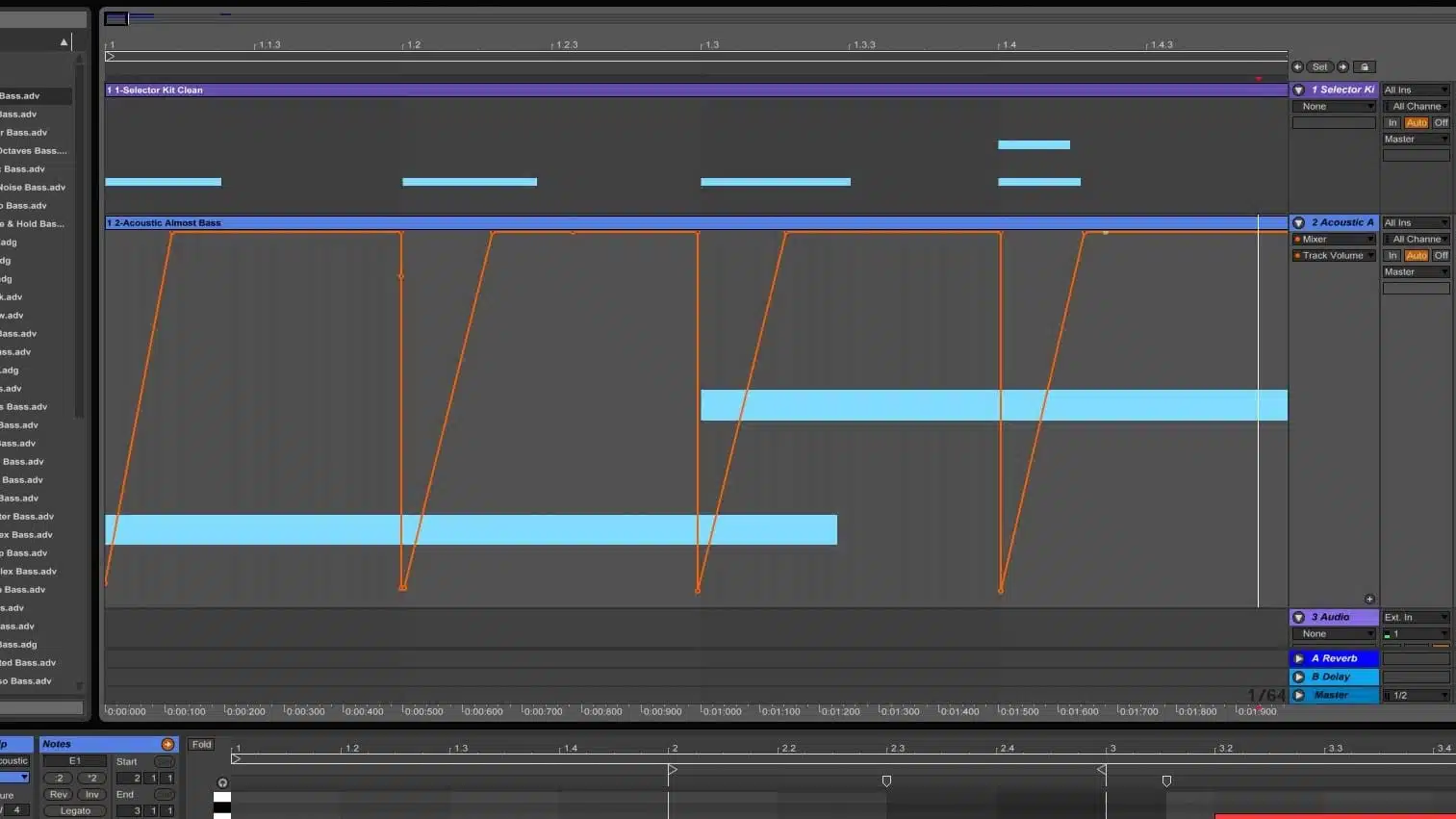
Automation is a powerful tool in digital music production, and it’s particularly useful when it comes to vibrato.
By automating the rate and depth of your vibrato, you can create dynamic, evolving effects that bring your tracks to life.
With automation, you can program changes in your vibrato parameters over time.
For example, you could start with a slow, shallow vibrato and gradually increase the rate and depth over the course of a track 一 creating a sense of tension & release.
Alternatively, you could use automation to create rhythmic vibrato effects that pulse in time with your track.
Many DAWs even allow you to draw automation curves, which gives you precise control over the shape and timing of your vibrato changes.
NOTE: This can be particularly useful for creating expressive, performance-like vibrato effects.
But automation isn’t just for creating vibrato from scratch.
If you’ve recorded a performance with natural vibrato, you can use automation to enhance or modify it in post-production.
For instance, you could use automation to increase the depth of the vibrato during a particularly emotional part of a vocal performance.
Or, to slow down the rate during a relaxed, laid-back section of a guitar solo.
-
MIDI Controllers
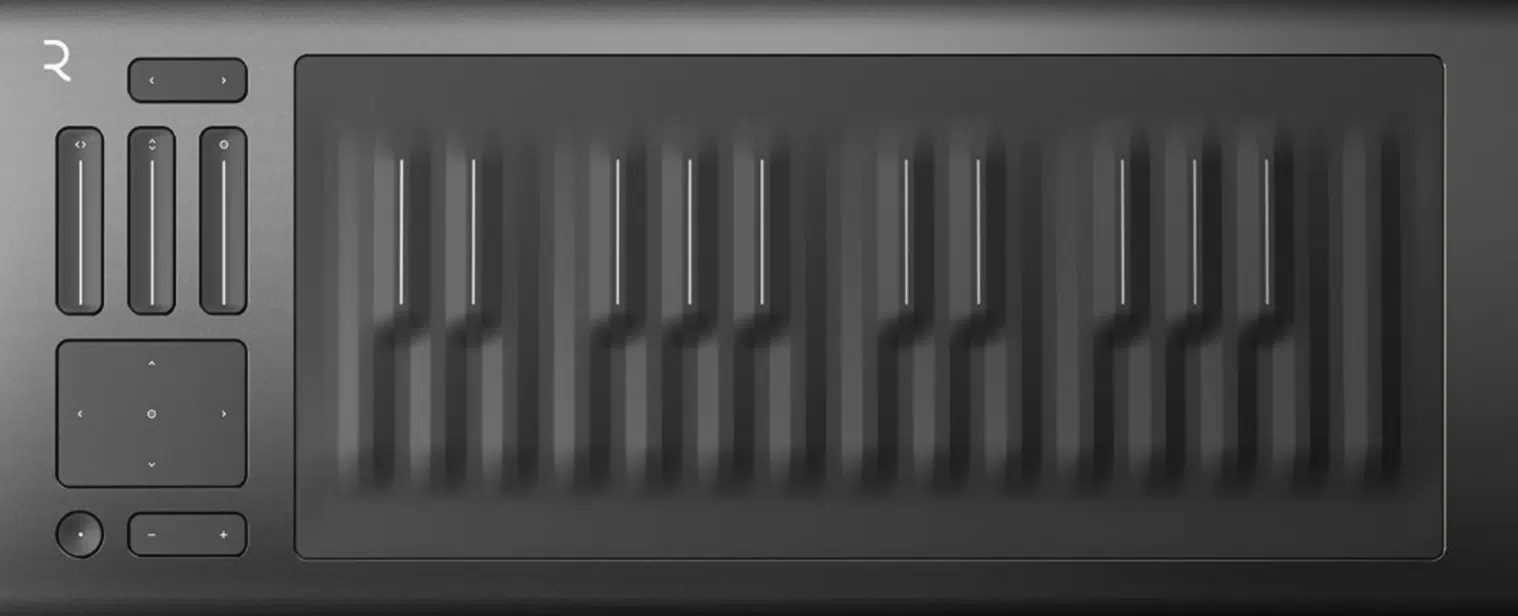
In the world of music production, MIDI controllers can be your best friend for creating realistic and expressive vibrato.
Whether you’re working with virtual instruments or processing recorded audio, a MIDI controller can give you hands-on control over your vibrato parameters.
Some MIDI controllers, like pitch bend and modulation wheels, are specifically designed for controlling vibrato.
By manipulating these wheels in real time as you play, you can create vibrato that responds organically to your performance.
This can be super useful when you’re working with virtual string instruments or brass instruments, as it allows you to mimic the natural vibrato of these instruments with your controller.
But the power of MIDI controllers goes beyond just pitch bend and modulation wheels.
Many controllers also include knobs, sliders, and pads that can be mapped to any parameter in your DAW or plugins.
This means you can assign these controls to your vibrato parameters, giving you flexible, hands-on control over your vibrato effects.
For example, you could map a slider to the rate of your vibrato, allowing you to smoothly ramp up the speed during a build-up section of your track.
Since we’re speaking about MIDI, if you’re interested in finding out the absolute best free MIDI packs of 2023, we’ve got you covered.
PRO TIP: Most synths & VST instruments already have vibrato “pre-mapped” (programmed) to the MOD Wheel.
Turning it up, increases the intensity, and is a great parameter to automate even if you’re not using it in real time.
So, if it’s an afterthought, no need to re-record your MIDI-data/performance.
-
Pitch Variation
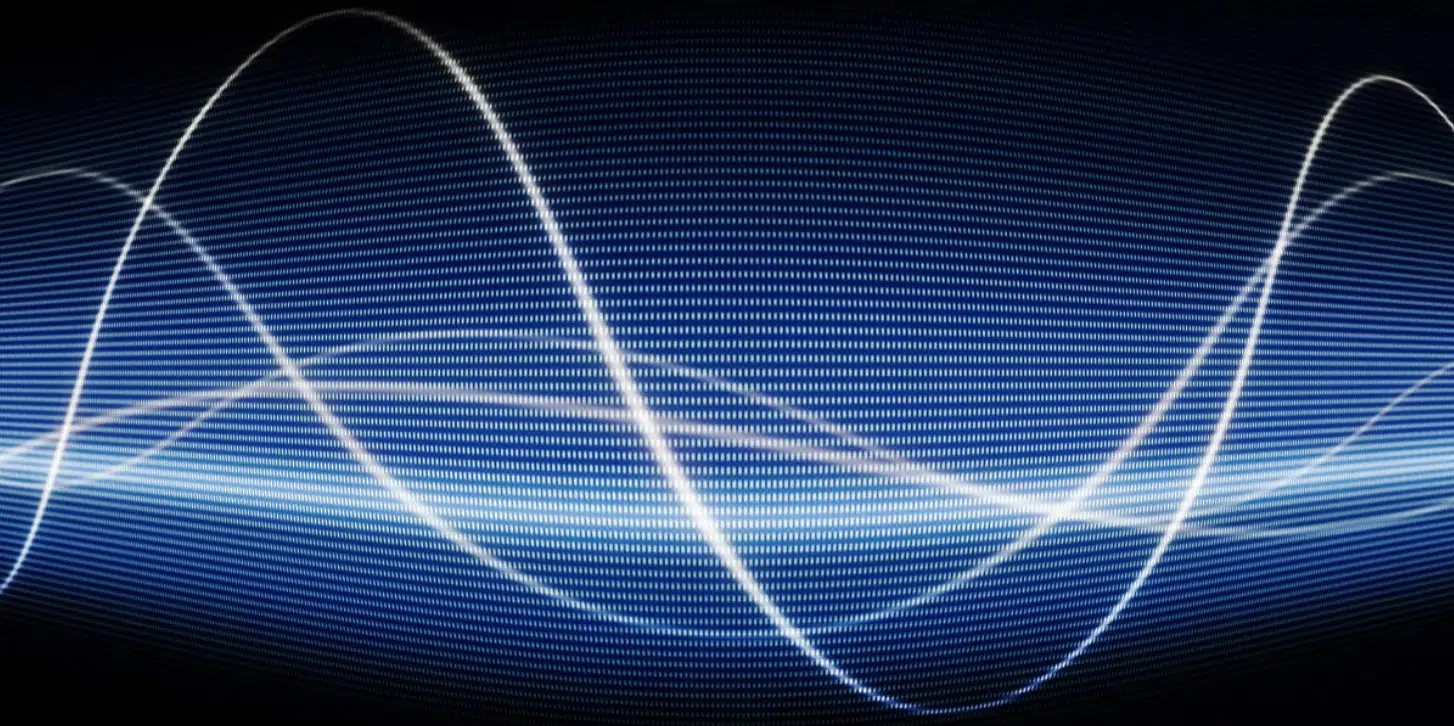
Picture a steady (sustained) note on a piano or a guitar: this is a ‘straight tone’.
Now, imagine that same note, but this time, it’s wavering slightly up and down in pitch at a regular speed: that’s vibrato.
Vibrato involves a regular, oscillating change in pitch, which can range from subtle to intense.
The pitch change in vibrato is relatively small but fast.
It’s this speed and depth of pitch variation that shapes the character of the vibrato, adding another layer of complexity to its use.
The pitch variation in vibrato can be used to convey different emotions or feelings.
- A slow, wide vibrato 一 Creates a sense of calm or melancholy.
- A fast, narrow vibrato 一 Creates excitement or tension.
Understanding these nuances can help you significantly in creating the desired emotional impact in your tracks.
Vibrato & Creative Sound Design
Sound design is an essential aspect of music production, offering limitless possibilities for creating unique and engaging sonic landscapes.
In this context, vibrato can serve as a powerful tool, capable of imbuing your sounds with movement, depth, and expressivity.
Let’s explore some of the ways you can use vibrato in the realm of creative sound design.
-
Modulation

Modulation is a broad term in audio processing that refers to any change in a signal over time.
Vibrato, in essence, is a type of modulation, specifically a periodic variation in pitch.
However, the concept of modulation extends far beyond just pitch.
By applying the principles of vibrato to other parameters, you can create a wide array of dynamic and interesting effects.
For instance, you can modulate the amplitude of a signal to create tremolo, a rhythmic pulsing effect that’s similar to vibrato but affects volume rather than pitch.
You can also modulate the cutoff frequency of a filter to create a sweeping, evolving timbre.
These are just a few examples of how you can use modulation to bring vibrato-like movement and depth to other aspects of your sound.
-
Modulation Sources & Destinations
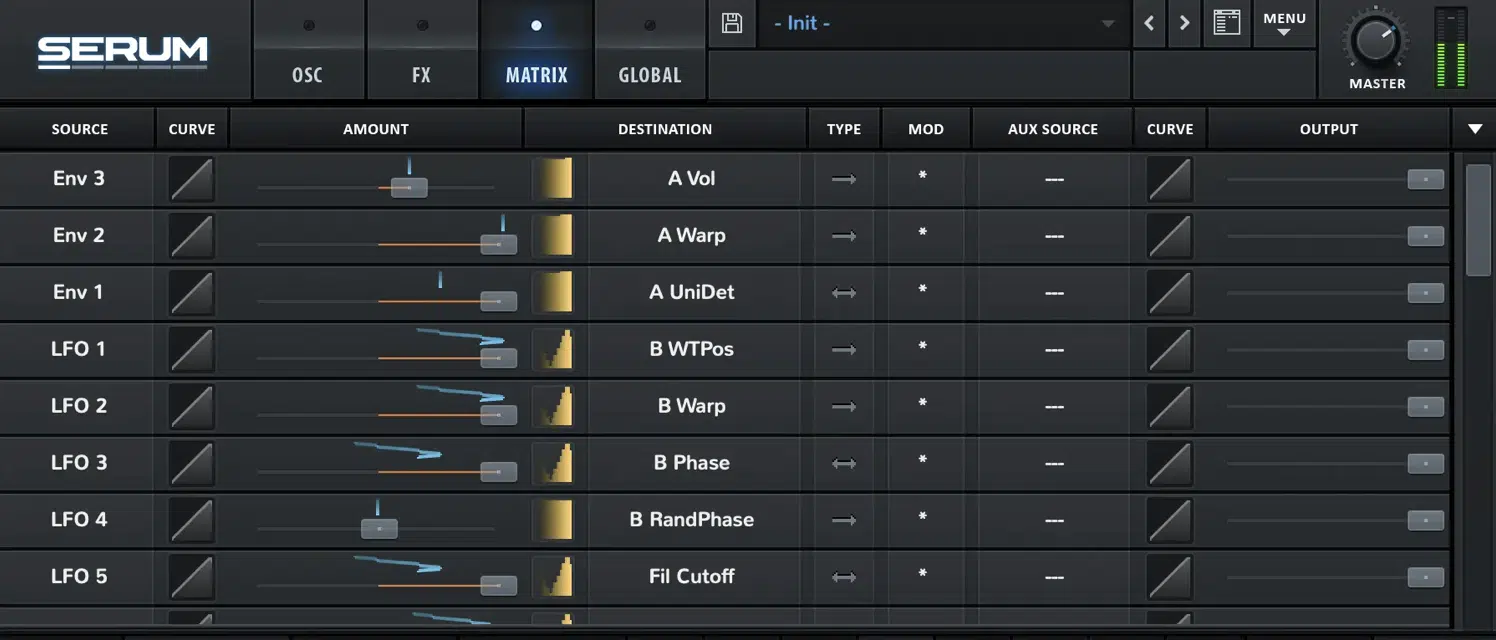
In the world of digital music production, you can modulate virtually any parameter you can think of.
This is where the concept of modulation sources and destinations comes into play.
A modulation source is what controls the modulation, and a destination is what gets modulated.
For example, in the case of vibrato, the source might be an LFO (low-frequency oscillator) generating a periodic waveform, and the destination would be the pitch of a sound.
By adjusting the rate and depth of the LFO, you can control the speed and intensity of the vibrato.
But why stop at pitch? You can use the same LFO to modulate other parameters, like volume, pan, filter cutoff, resonance, and more.
This allows you to create complex, multi-dimensional modulation effects, where different aspects of your sound are moving and evolving cohesively.
-
Advanced Modulation Techniques
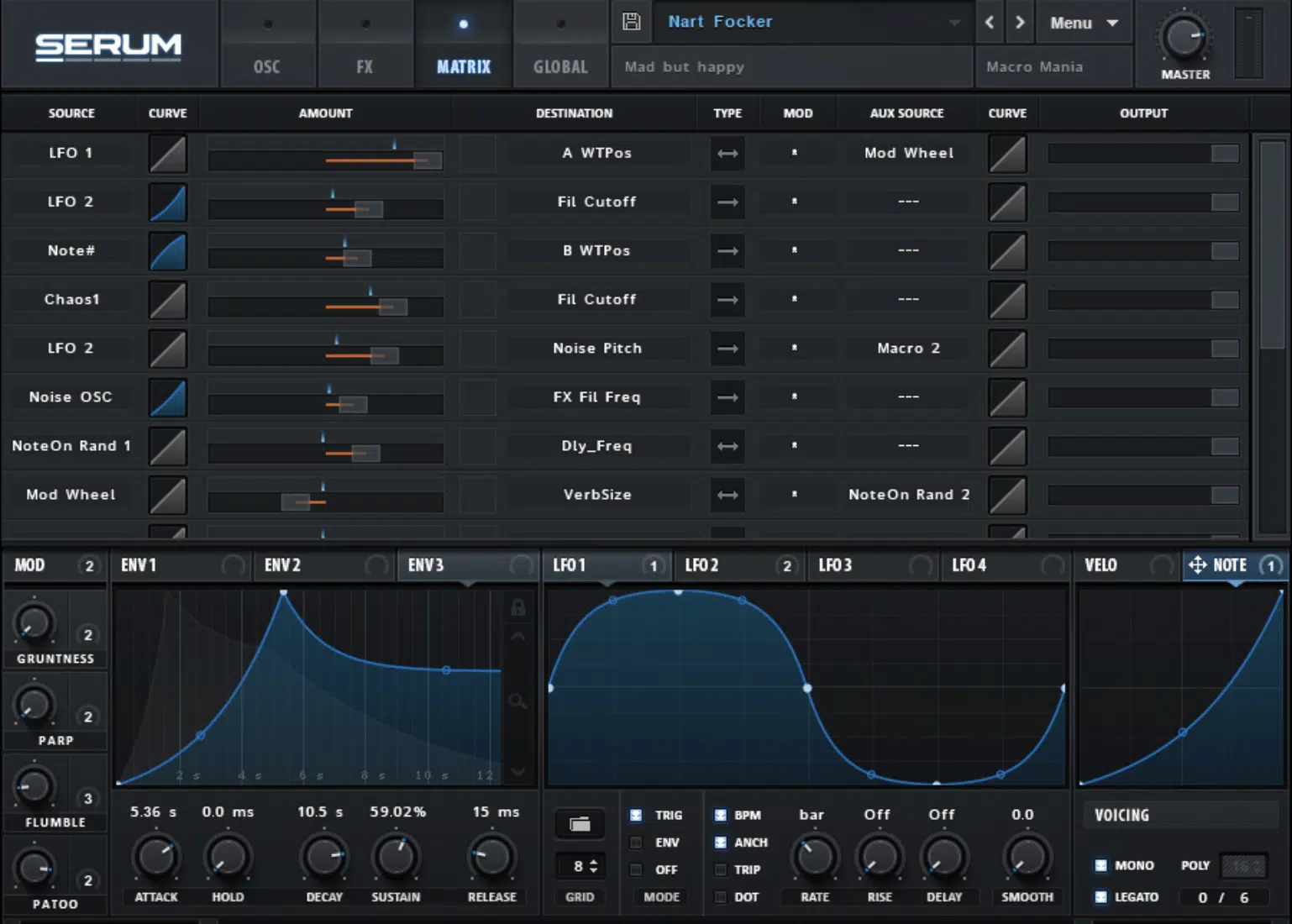
Finally, let’s touch on some advanced modulation techniques that you can use for creative sound design with vibrato.
One such technique is modulation mapping, which allows you to control how a modulation source affects a destination.
For example, you can set up a modulation map so that an LFO affects the pitch of a sound more intensely at high frequencies than at low frequencies, creating a unique vibrato effect.
Another technique is modulation feedback, where the output of a modulation process is fed back into the input.
This can result in complex, unpredictable modulation effects that can add a touch of chaos and excitement to your sound.
So, whether you’re designing sounds for a dreamy synth pad, a gritty bassline, or a complex drum pattern, don’t overlook the power of vibrato.
By using it creatively and thinking beyond just pitch, you can add a whole new dimension of movement and expressivity to your sound.
What Is Vibrato: For Singers, Songwriters & Producers
Here is the point in our article where we incorporate real life vibrato for singers, songwriters and music producers, so let’s dive in.
-
The Vibrato Effect
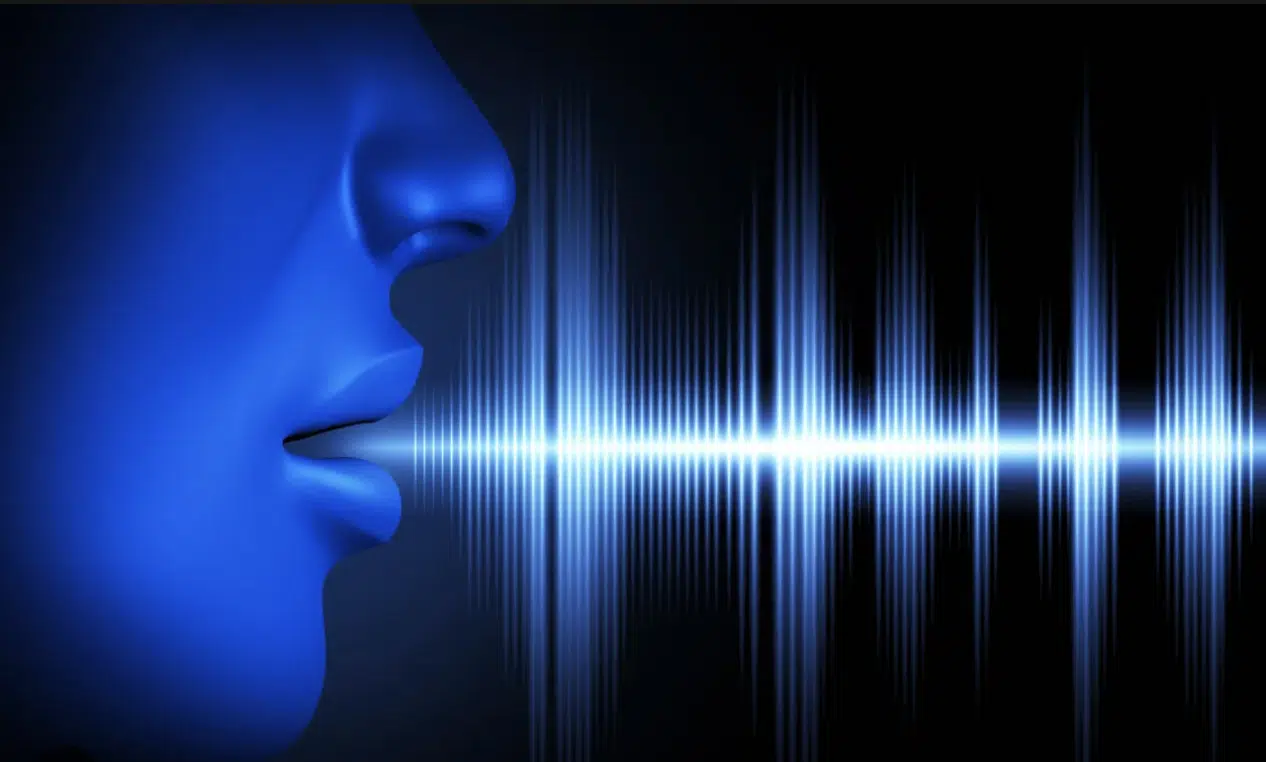
The vibrato effect is a beautiful thing, often compared to a ripple in a pond (except, the audible version).
This effect can add warmth and depth to a voice or an instrument, making the sound more appealing and engaging to the listener.
In vocal music, the vibrato effect can make a singer sound world-class, transforming their performance into a riveting sonic experience.
It’s the secret sauce many singers use to add color and emotion to their performances, making their voice shimmer and resonate in a unique way.
The vibrato effect isn’t confined to the world of vocals 一 instrumentalists also use it extensively.
String players, for instance, often employ vibrato to make their instruments sing, while brass and woodwind players use it to add richness to their tones.
Even in the realm of electronic music, the vibrato effect is often simulated to add depth and movement to synth lines.
Understanding and utilizing the vibrato effect in music production can be a game-changer.
It can add a touch of professionalism to your mind-blowing mixes, making them sound more polished and refined.
Whether you’re producing a soulful ballad or a high-energy dance track, the vibrato effect can be the key to taking your music to the next level.
Natural Vibrato
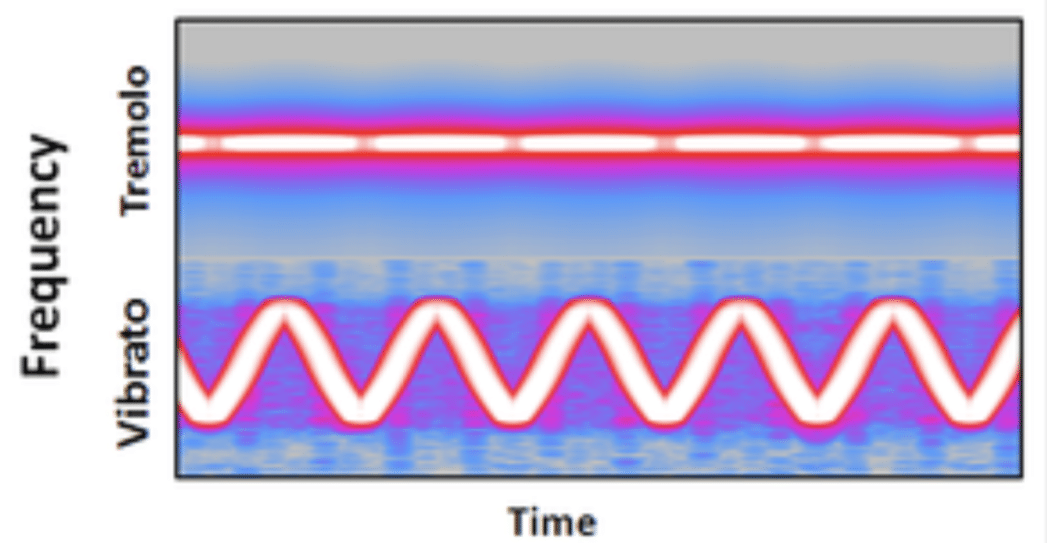
You’ve probably encountered the term “natural” or “true” vibrato before.
This refers to vibrato that is produced naturally by the human voice or by an instrument, without the use of electronic effects or manipulation.
True vibrato is all about control, as it’s a deliberate fluctuation in pitch that a singer or instrumentalist can turn on/off at will.
True vibrato is a beautiful thing to behold… picture a super dope surfer riding an epic wave.
They’re able to effortlessly move up and down with the natural ‘rhythm’ of the ocean.
- For singers 一 It involves a fine control of the vocal folds and the air pressure from the lungs.
- For instrumentalists 一 It involves a subtle oscillation of the finger, wrist, or embouchure.
Producing true vibrato requires skill, technique, and practice, so don’t get overwhelmed if you’re first starting out.
Developing Vibrato
Whether you’re a singer trying to find your vibrato or a music producer seeking to guide your artists, understanding the process of developing vibrato is crucial.
One essential aspect of developing vibrato is understanding that it’s a byproduct of good technique, not a technique in itself.
Meaning, you have to focus on the basics first, such as:
- Breath control
- Vocal fold closure
- Pitch control (or correction)
Vocal exercises can be particularly helpful in developing vibrato.
These exercises help strengthen the vocal cords and improve breath control, which are both crucial for producing natural vibrato.
Let me expand:
-
Vocal Folds

The vocal folds, also known as vocal cords, play a crucial role in producing vibrato.
These are a pair of flexible bands of muscle tissue located in the voice box or larynx.
When air passes between these folds, they vibrate to produce sound.
By subtly changing the tension in these folds, a singer can produce the characteristic oscillation in pitch that we call vibrato.
The vocal folds are incredibly sensitive/versatile, and capable of vibrating hundreds of times per second.
Their tension can be minutely adjusted to produce different pitches.
This flexibility and control are what allow great singers to produce vibrato naturally.
NOTE: Excessive tension in the vocal folds can hinder the production of natural vibrato.
-
Straight Tone (ST)
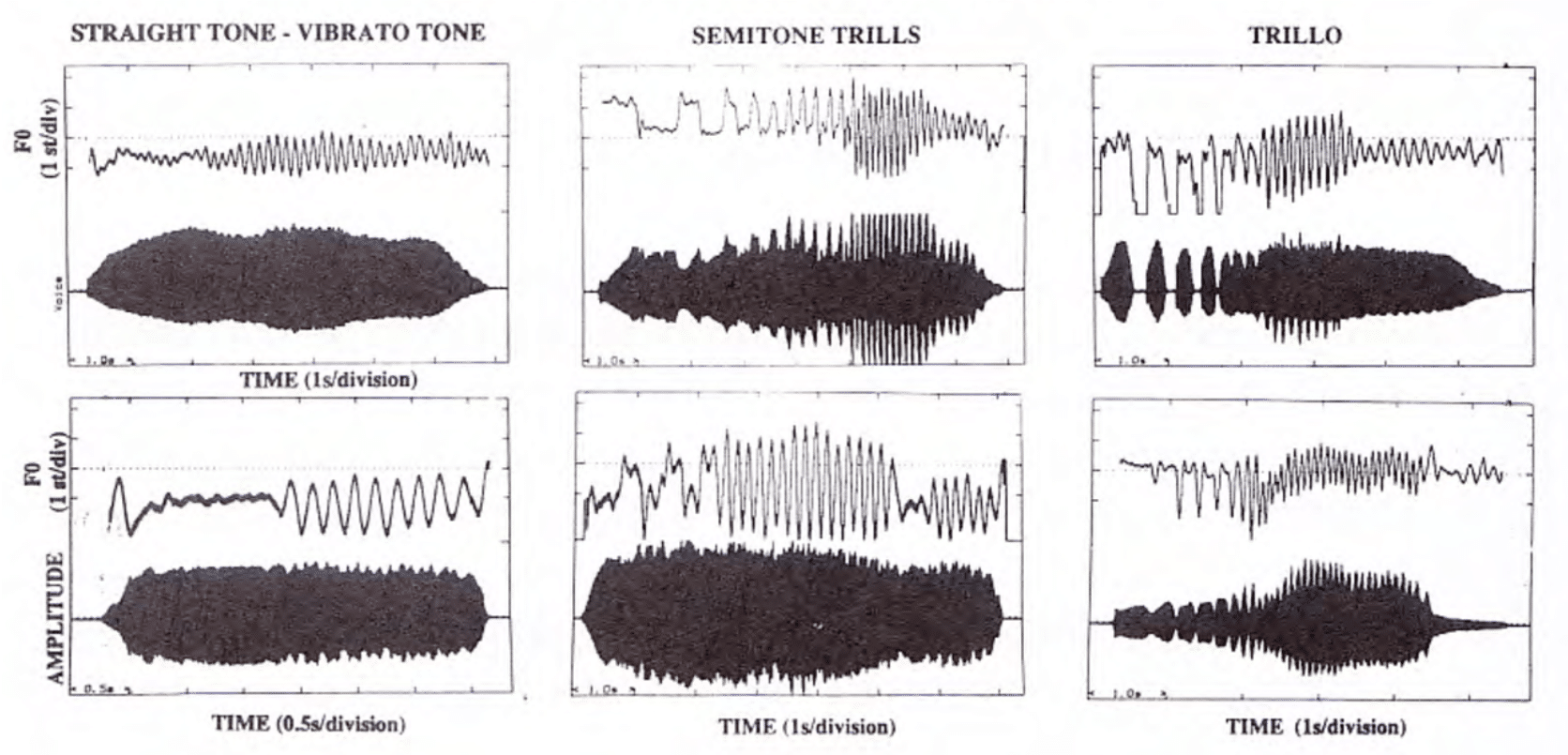
Straight tone is the opposite of vibrato, it’s a note that stays constant in pitch, without any fluctuation.
Many singers start with a straight tone and then add vibrato as they sustain the note.
The contrast between the ST and the subsequent vibrato can create a dramatic effect (tension & release).
Straight tone has its place in music and can be used effectively for stylistic purposes.
Some genres, like early music and certain forms of pop music and folk music, often favor a ST.
However, overuse of ST, especially in genres where vibrato is the ‘norm,’ can make a performance sound flat and lifeless.
Since you’re most likely in the music production field, it’s crucial to understand the effect of ST and how it contrasts with vibrato.
By skilfully balancing the two, you can create dynamic, engaging tracks that keep your listeners hooked.
-
Vocal Chord Tension
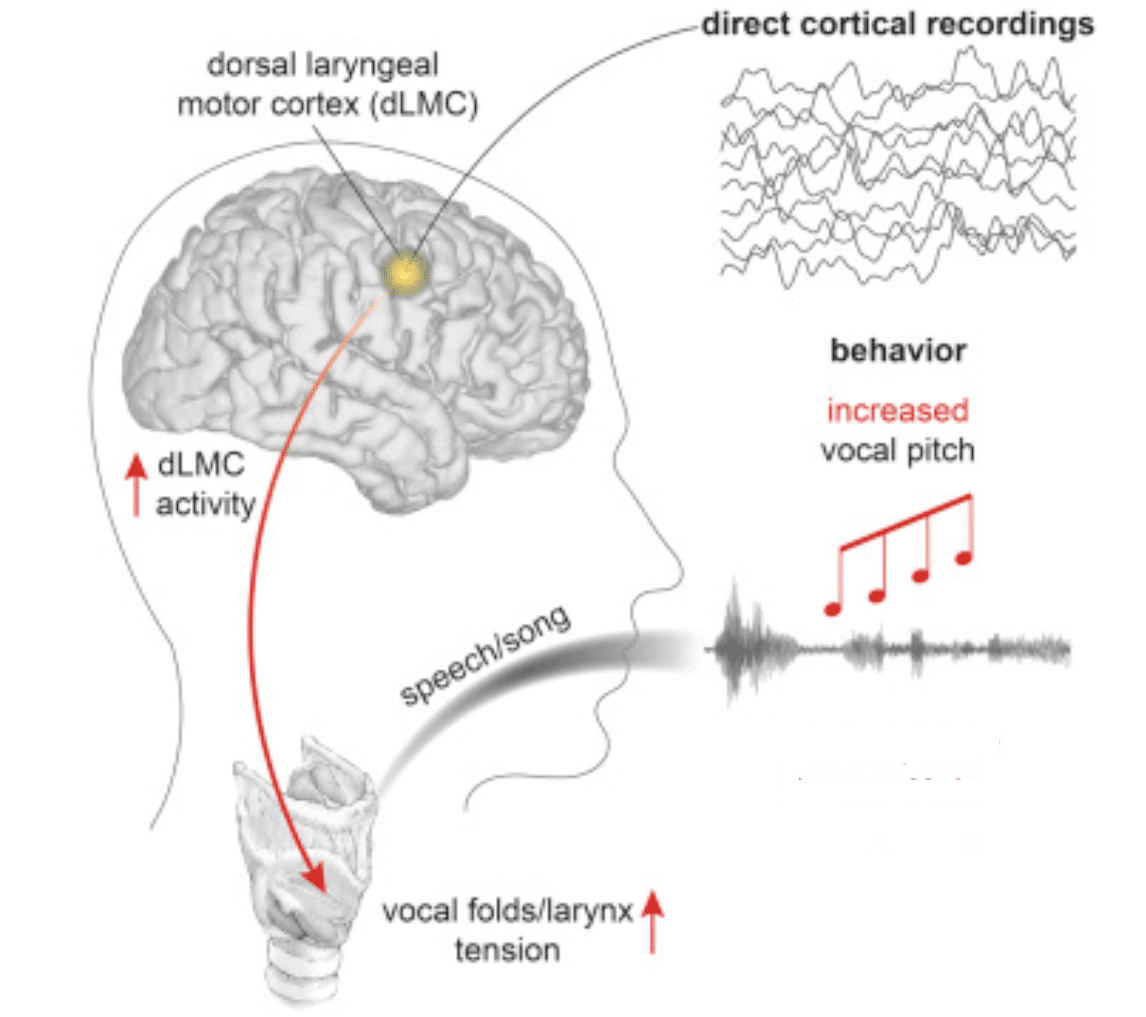
The tension in the vocal cords plays a crucial role in producing sound.
When we sing or speak, air from the lungs passes through the vocal cords, causing them to vibrate.
The tension in these chords determines the pitch of the sound produced.
- Tighter tension 一 Results in a higher pitch.
- Looser tension 一 Results in a lower pitch.
Understanding vocal chord tension is essential for singers aiming to develop a natural and controlled vibrato.
- Too much tension 一 Leads to a strained and unpleasant sound.
- Not enough tension 一 Leads to a weak and breathy tone.
Mastering this balance is one of the keys to producing chest voice with a beautiful and expressive vibrato, just ask classical singers or opera singers.
If you’re a music producer, understanding the role of vocal cord tension can help guide your artists to better vocal performances.
You can suggest techniques and exercises to help them find the optimal tension for their voice and style, resulting in more dynamic and emotive performances.
-
Vocal Fold Closure
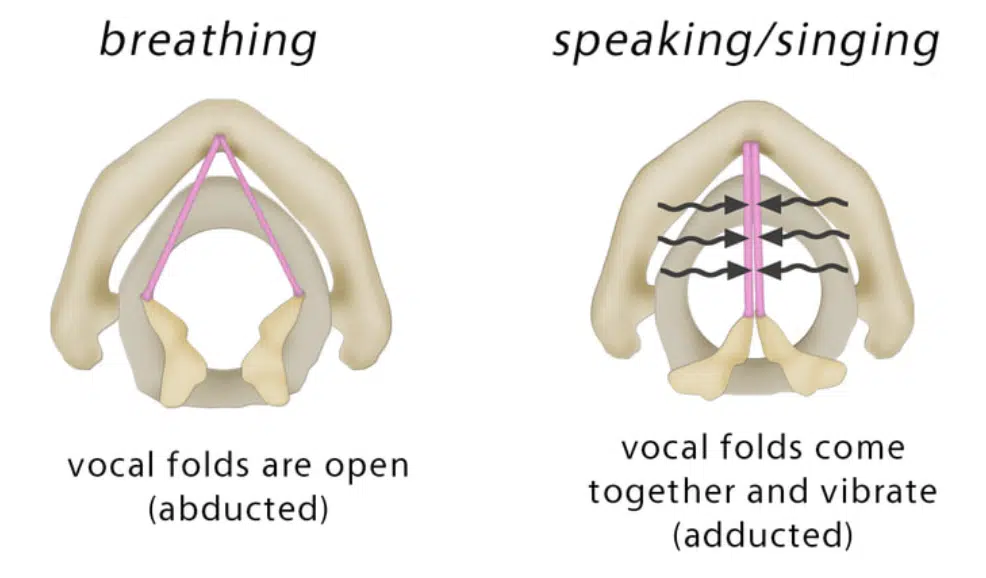
Vocal fold closure (vocal cord adduction) is the process by which the vocal folds come together to produce sound.
Proper vocal fold closure is essential to make vibrato happen, and for a clear/resonant tone.
If the folds don’t close properly, the resulting sound can be breathy and weak, while over-compression can lead to a strained and harsh tone.
Developing good vocal fold closure (with your vocal tract) is important for producing a controlled and consistent vibrato.
The ability to bring the folds together effectively allows a singer to regulate the pitch oscillations that create vibrato.
-
Throat Vibrato
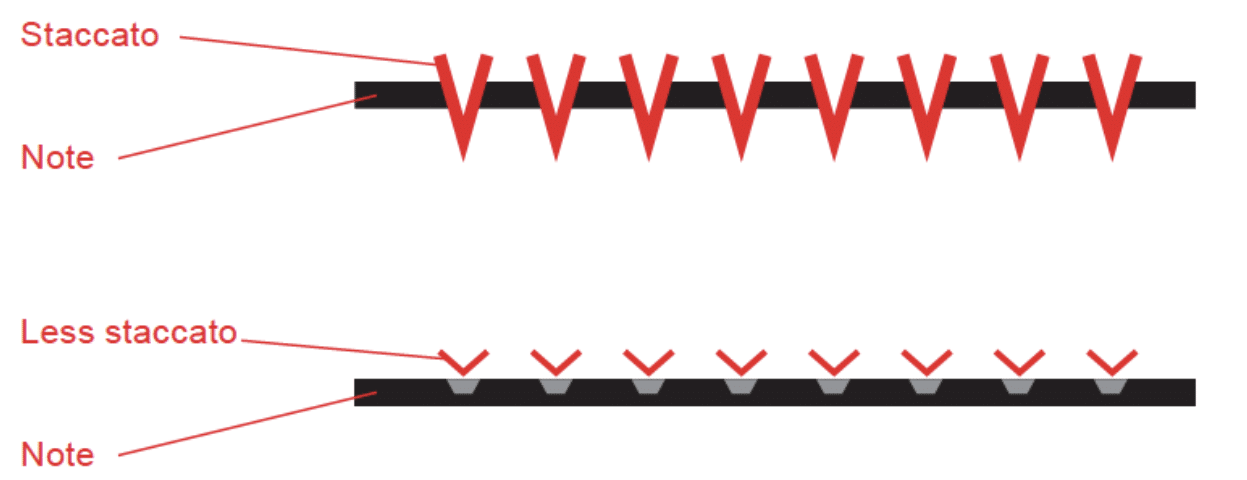
Throat vibrato is a type of vibrato produced by fluctuations in the tension of the muscles in the throat.
This method of producing vibrato is often considered less desirable, as it can lead to tension and strain in the voice.
Throat vibrato tends to sound forced and unnatural compared to the more desirable diaphragmatic or vocal fold vibrato.
Despite its drawbacks, some singers use throat vibrato effectively as a stylistic choice.
It can produce a unique sound that may suit certain genres or musical contexts.
However, when you’re attempting to sing vibrato, it’s generally recommended to focus on developing a natural vibrato through good vocal technique and breath control.
Vocal Tone
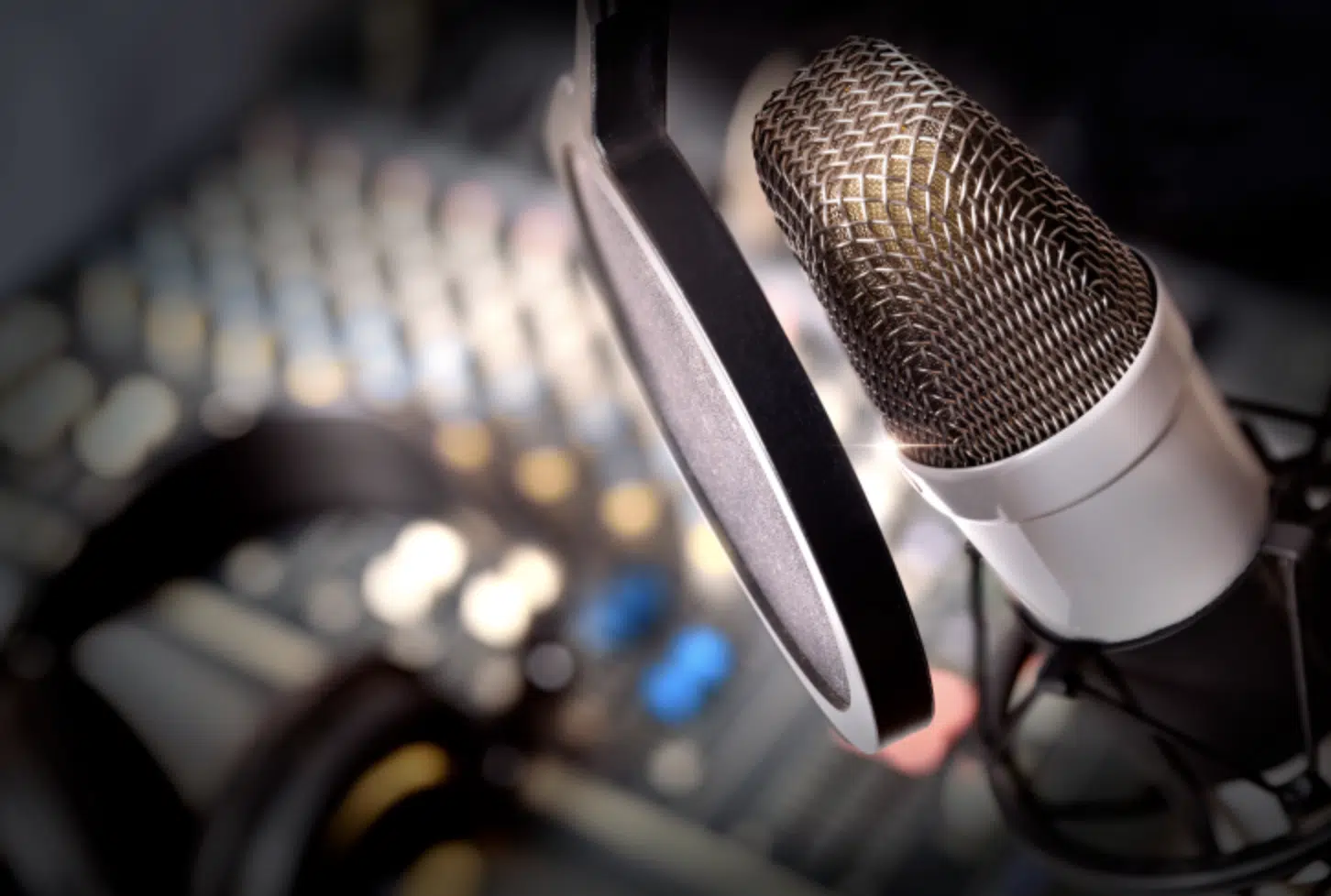
Vocal tone refers to the specific quality of a singer’s voice.
It’s influenced by a variety of factors, including the physical characteristics of the vocal apparatus, singing technique, and emotional expression.
Every singer has a unique vocal tone, and this individuality is one of the things that makes singing such a powerful form of expression.
When singing straight tone, the singer’s vocal tone becomes particularly important.
Without the added richness of vibrato, the vocal tone needs to carry the emotional weight of the performance.
When you sing vibrato, clear and well-produced vocal tone can make ST singing sound pure, focused, and emotionally engaging.
Whether you’re singing with a rich vibrato or a pure ST, your vocal tone is one of the keys to creating engaging and memorable tracks.
Diaphragmatic Vibrato
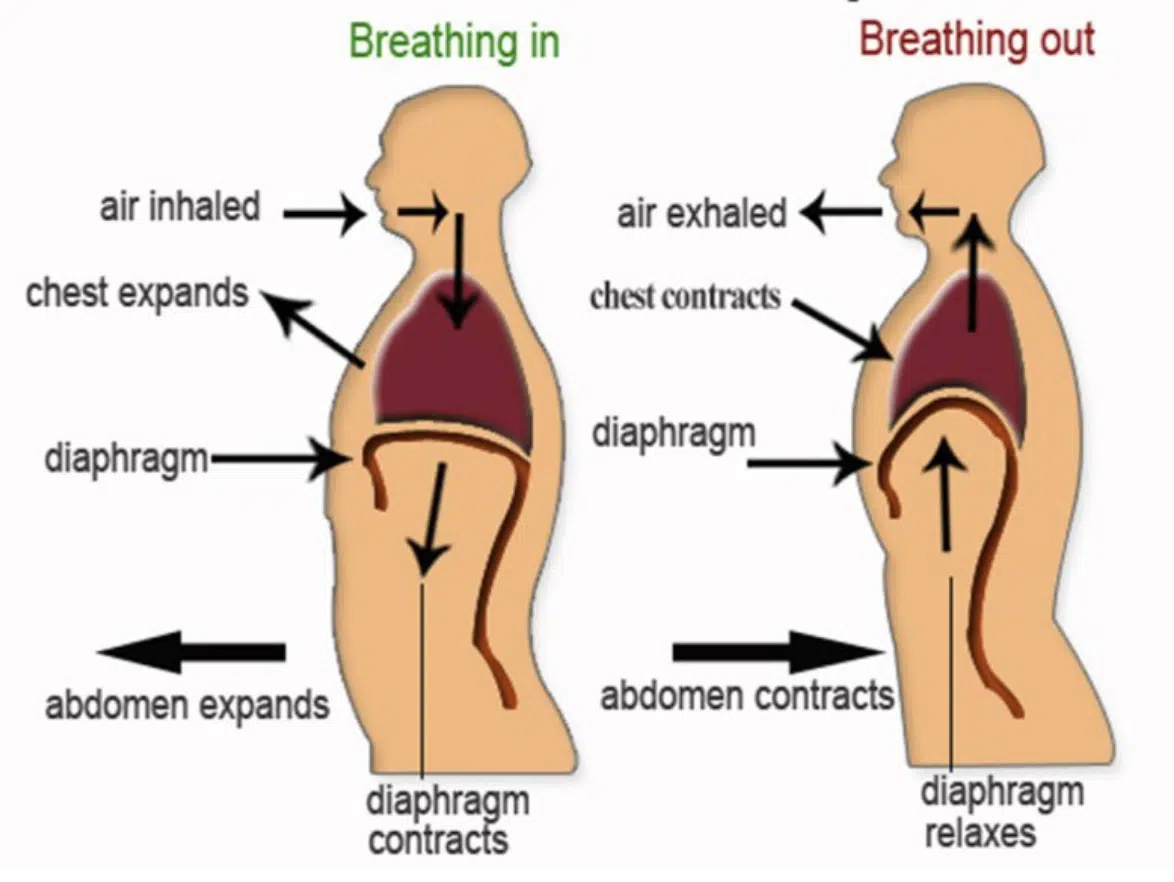
Diaphragmatic vibrato is characterized by diaphragmatic pulsating during a sustained tone.
Generally, it produces a tremolo effect, as the breath should flow evenly and not be taken from the “pulse” of a diaphragm.
Let’s break down different types of diaphragmatic vibrato.
-
Vocal Trill

A vocal trill, often confused with vibrato, is a rapid alternation between two adjacent pitches.
It’s a vocal technique that requires agility and control, as you must quickly and accurately switch between the two pitches.
While a vocal trill is a distinct technique from vibrato, the skills involved in producing a good trill can also contribute to a controlled and consistent vibrato.
Both techniques require a flexible and well-coordinated vocal instrument, as well as good breath control.
-
Vocal Wobble
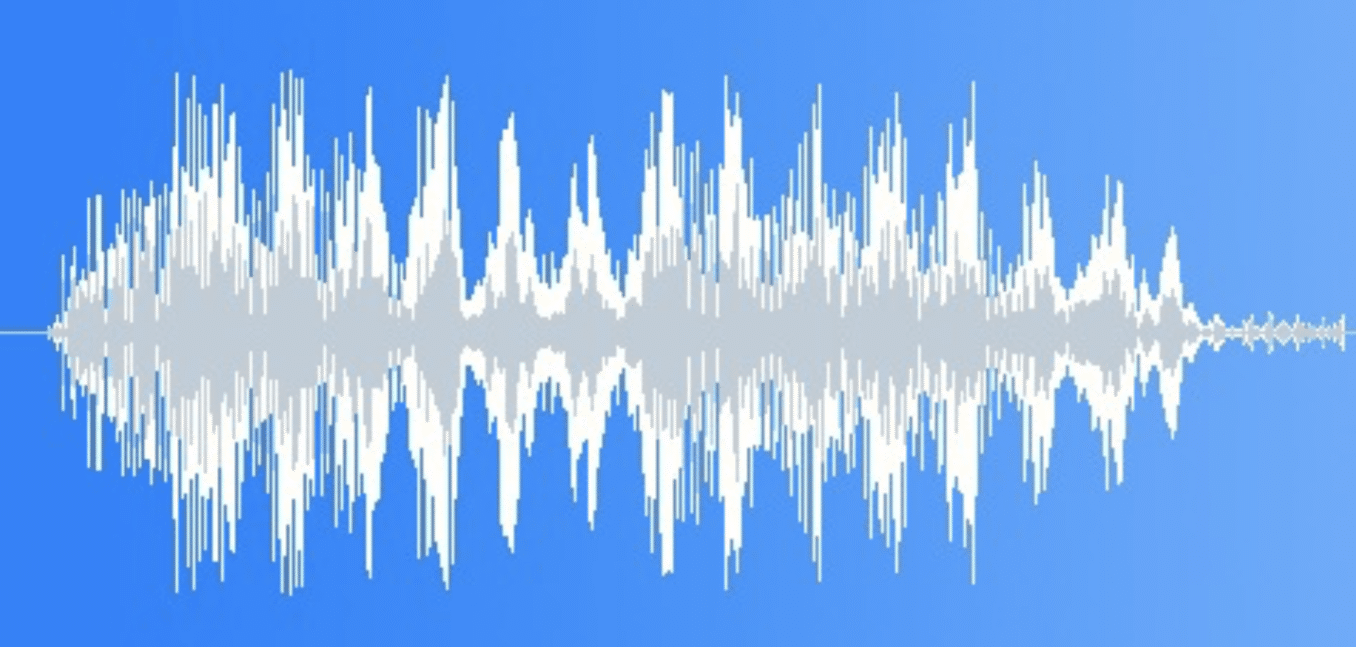
A vocal wobble is a type of uncontrolled, excessive vibrato that can make the voice sound shaky or unsteady.
It’s often caused by a lack of coordination between the folds and the diaphragm, or by poor vocal technique.
A ‘wobble’ can detract from a performance and may also indicate underlying issues with vocal health or technique.
Developing a controlled, diaphragmatic vibrato can help you avoid a vocal wobble.
This involves developing good breath control and a balanced, relaxed vocal technique.
Regular vocal exercises can also help improve coordination and control, reducing the risk of a wobble.
-
Rapid Vibrato

Rapid vibrato is a type of vibrato where the pitch oscillations occur at a high speed.
While vibrato speed can vary based on stylistic choices and personal preference, a vibrato that is too fast can sound nervous or uncontrolled.
On the other hand, a well-controlled rapid vibrato can add excitement and intensity to a performance.
Side note, in order to create an ideal performance from home, you’ll need to know how to set up your home studio and record correctly.
Developing a controlled rapid vibrato requires good technique and a high level of coordination between the vocal folds and the diaphragm.
If you’re a singer, you may need to experiment with different vibrato speeds to find the one that suits your unique voice and style.
When it comes to singing vibrato, whether it be singing sustained notes, exaggerated vibrato, slow vibrato, or soaring vibrato, it takes time and dedication.
-
Lip Vibrato

Lip vibrato is a singing technique often used by brass and woodwind players 一 where the performer oscillates their lip tension to create a vibrato effect.
While it’s less common in singing, some classical singers use a similar technique, oscillating their lip tension to add vibrato to their tone.
Lip vibrato can produce a unique sound, but it can also lead to tension and strain if not done correctly.
If you wish to experiment with lip vibrato, make sure to do so carefully.
Make sure to maintain good overall vocal technique and avoid unnecessary tension.
Producing Vibrato

Creating vibrato involves a combination of good vocal technique, breath control, and physical coordination, typically perfected by opera singers.
It requires a subtle fluctuation in pitch, which is typically achieved by oscillating the tension in the folds.
This process can be influenced by several factors, including breath pressure, vocal fold tension, and the position of the larynx.
Developing the ability to create vibrato at will can take time and practice, just like when you’re learning music theory.
It’s often helpful for singers to start by practicing sustained notes with a straight tone, and then gradually introduce a slight fluctuation in pitch.
Over time, with regular practice, this fluctuation can be developed into a controlled vibrato.
-
Consistent Vibrato (Continuous Vibrato)
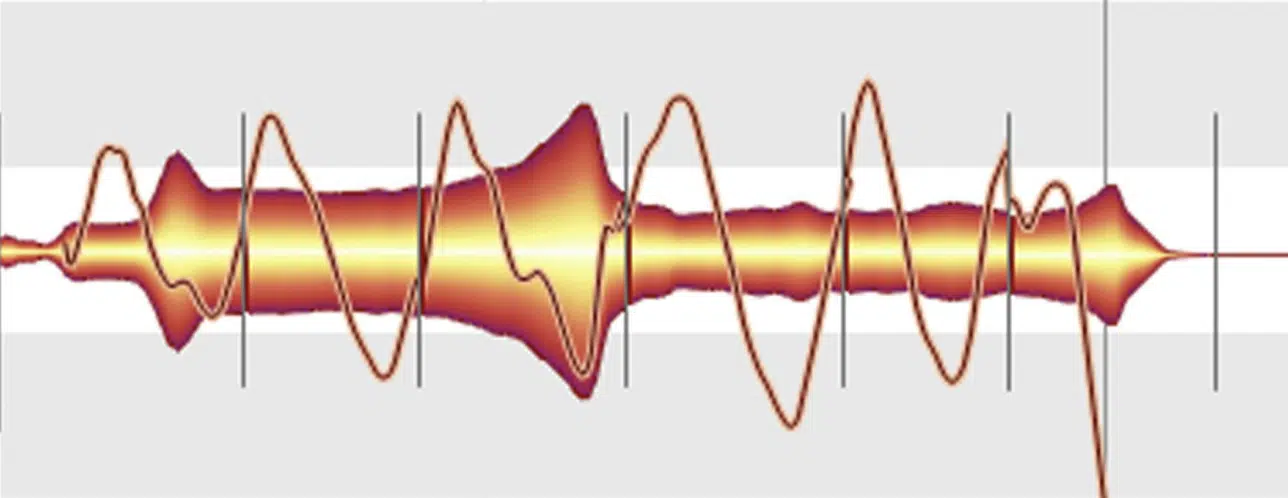
Achieving a consistent vibrato requires regular practice, a good understanding of vocal technique, and a heightened vocal range.
Consistency in vibrato includes maintaining a steady rate of pitch fluctuation and a uniform depth of pitch change throughout a performance.
A consistent vibrato can make a singer’s voice sound more mature, controlled, and emotionally expressive.
Some singers may naturally have a more consistent vibrato, while others may need to work on it.
Vocal exercises focusing on breath control, vocal fold tension, and pitch control can all help improve the consistency of your vibrato.
Learn Vibrato in Various Instruments
To wrap up this article, let’s talk about how much vibrato is in various instruments, starting with string instruments.
-
String Instruments
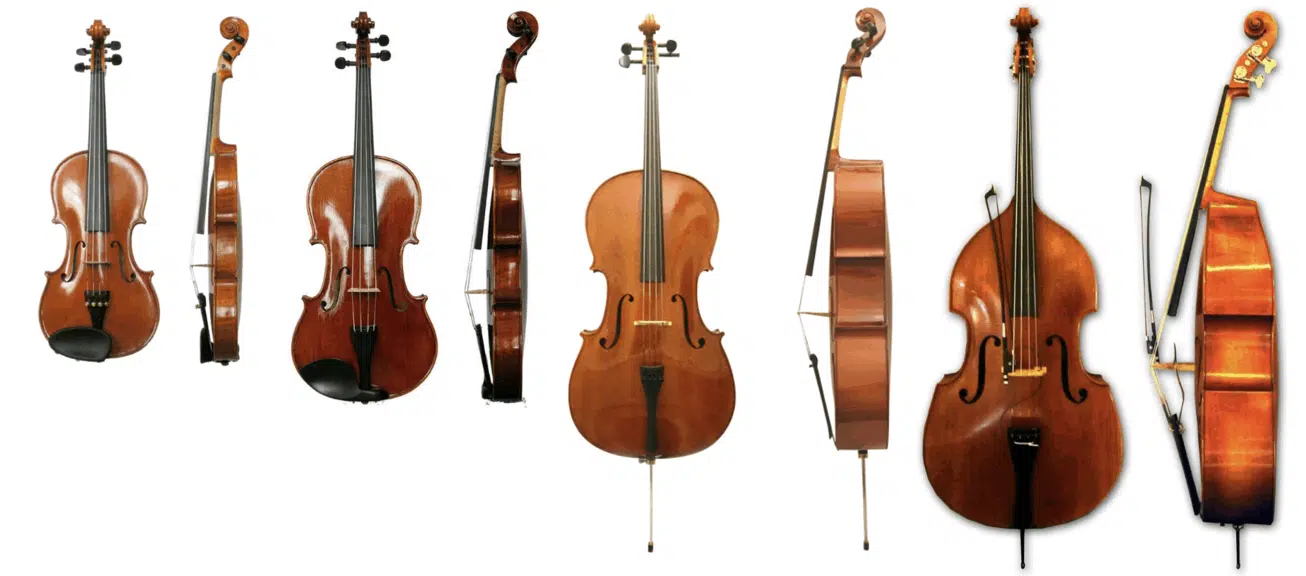
Vibrato on string instruments like the violin, viola, cello, and double bass is produced by oscillating the pitch of a note with a finger of the left hand on the string.
This technique adds richness and warmth to the sound and can be used to add emotional expression to a performance.
The use of vibrato in string instruments has evolved over time, with different periods and styles favoring different vibrato speeds and depths.
Today, string players often adjust their vibrato to suit the music they are playing.
- Use a faster, narrower vibrato for intense passages.
- Use a slower, wider vibrato for more lyrical sections.
If you’re looking for a MIDI chord collection that perfectly compliments string instruments, look no further.
-
Brass Instruments
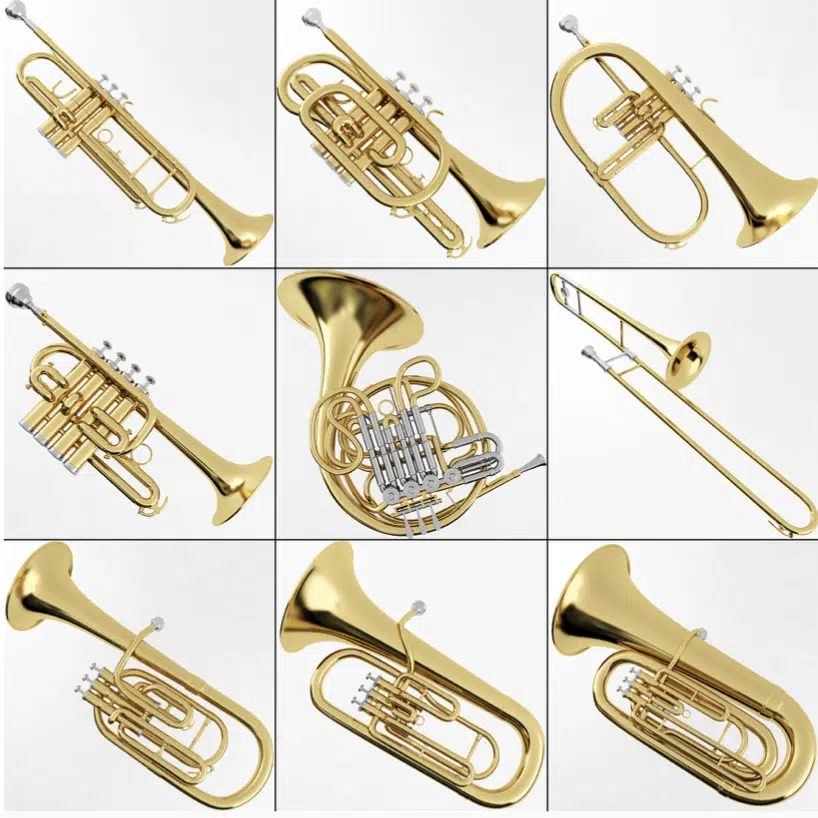
Brass players produce vibrato by oscillating the pitch of a note using either their lips (lip vibrato) or their hand (hand vibrato).
This technique can add depth and expressiveness to the sound of brass instruments like the trumpet, trombone, tuba, and French horn.
The choice of vibrato technique when it comes to dealing with brass instruments can depend on:
- Your personal preference
- The type of instrument
- The musical context
Some brass players may also use a diaphragm to create vibrato, similar to the technique used by singers.
-
Woodwind Instruments
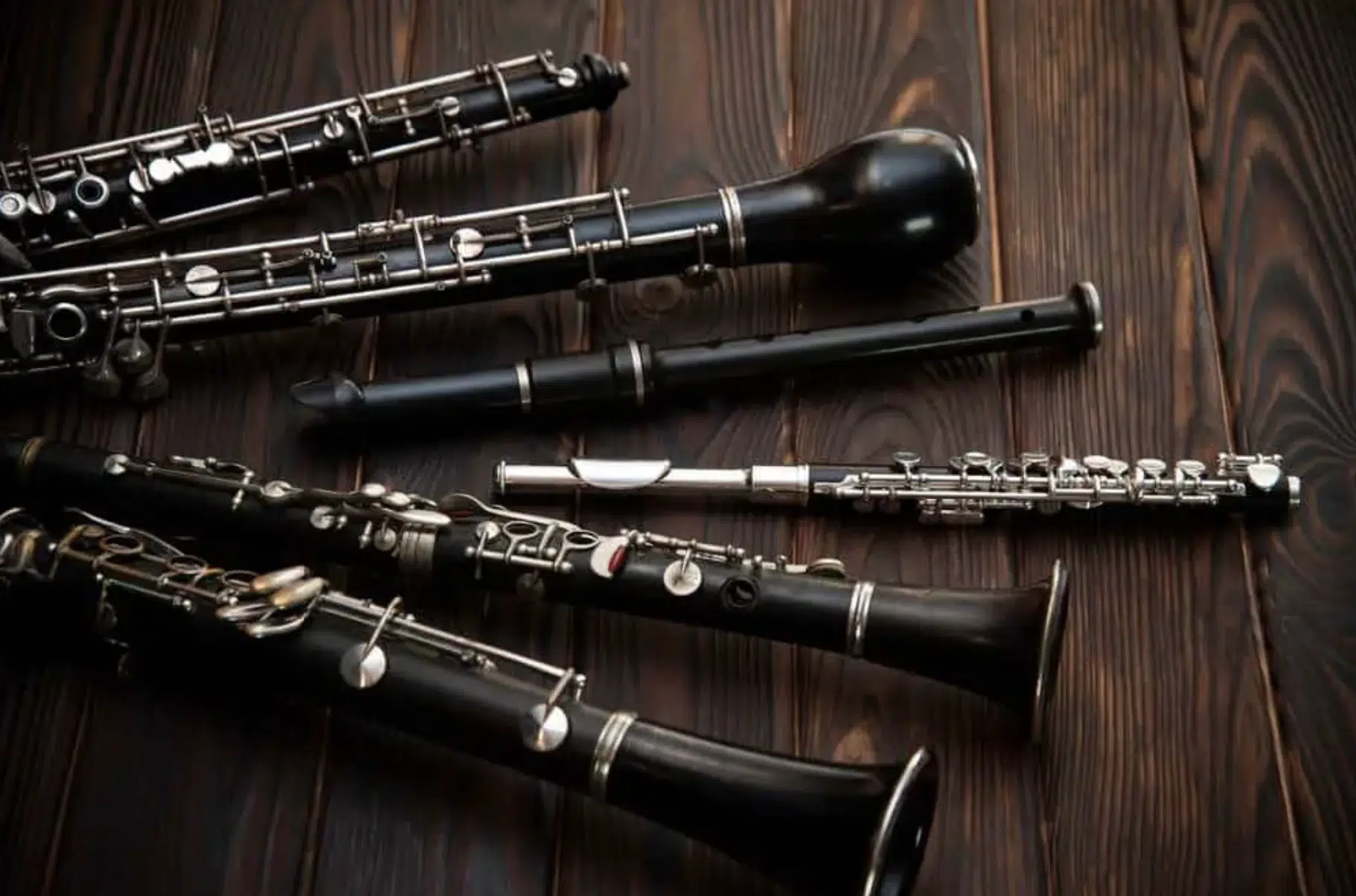
Woodwind players produce vibrato by subtly varying the air pressure from their diaphragm or by moving their embouchure (the way they shape their mouth to blow into woodwind instruments).
This results in a fluctuation in pitch that adds richness and expressiveness to the sound.
Different woodwind instruments and different musical styles require different vibrato techniques.
For instance, woodwind instruments often require the use of diaphragm vibrato, while clarinet players typically use an embouchure vibrato.
-
Electric Guitars

Electric guitar players often use a technique called string bending to produce vibrato when they’re playing on their electric guitars.
This involves pushing a guitar string up or down on the fretboard to raise the pitch, and then rapidly repeating this motion to create a vibrato effect.
The use of vibrato on the electric guitar can add expression and intensity to a performance.
It can also be used to sustain notes, as the motion of the string helps to keep it vibrating for longer.
NOTE: With the use of various effects pedals and processors, guitarists can also achieve an electronic vibrato effect.
This effect digitally oscillates the pitch of the notes played, creating a vibrato sound.
It can be manipulated to achieve a range of different sounds and styles, further expanding the expressive possibilities of the electric guitar.
What Is Vibrato: Final Thoughts
And there you have it, an extensive dive into the world of vibrato.
We’ve uncovered the intricacies of vibrato, its significance in music, and its occurrence in various instruments, to the techniques of producing it naturally & digitally.
Whether you’re a singer, songwriter, or music producer, today’s article should have shed light on the beautiful art of vibrato and its potential to transform your music.
Therefore, you’ll never have to ask yourself “what is vibrato” again.
Now, here’s where the rubber meets the road: it’s time to put your newfound knowledge into practice.
As you experiment with vibrato in your music, one great resource you can use are these professional MIDI melodies.
This exquisite collection of MIDI melodies offers a fantastic starting point for your experimentation with vibrato.
The beauty of MIDI is that it provides a malleable musical canvas.
You can take these expertly crafted melodies and add your own vibrato and pitch variations, testing out different techniques and approaches.
This is a great way to enhance your understanding and skill with vibrato, while also creating unique, emotionally compelling music.
No matter what you do, make sure to keep exploring, experimenting, and above all, keep making music.
Until next time…







Leave a Reply
You must belogged in to post a comment.